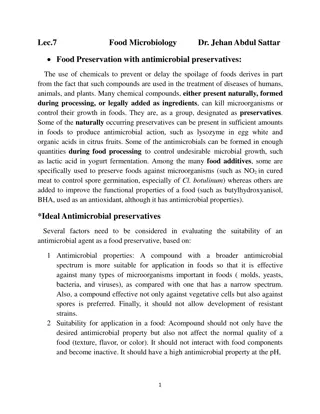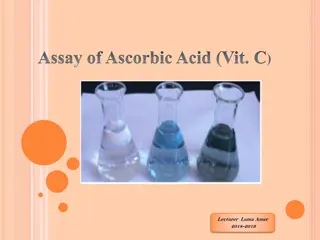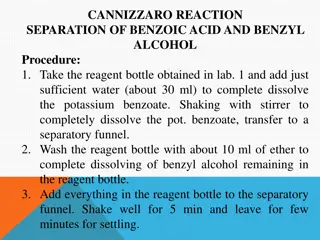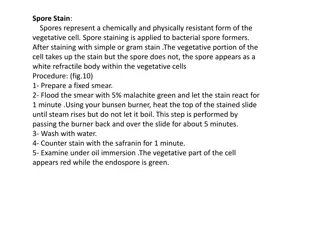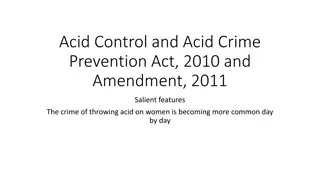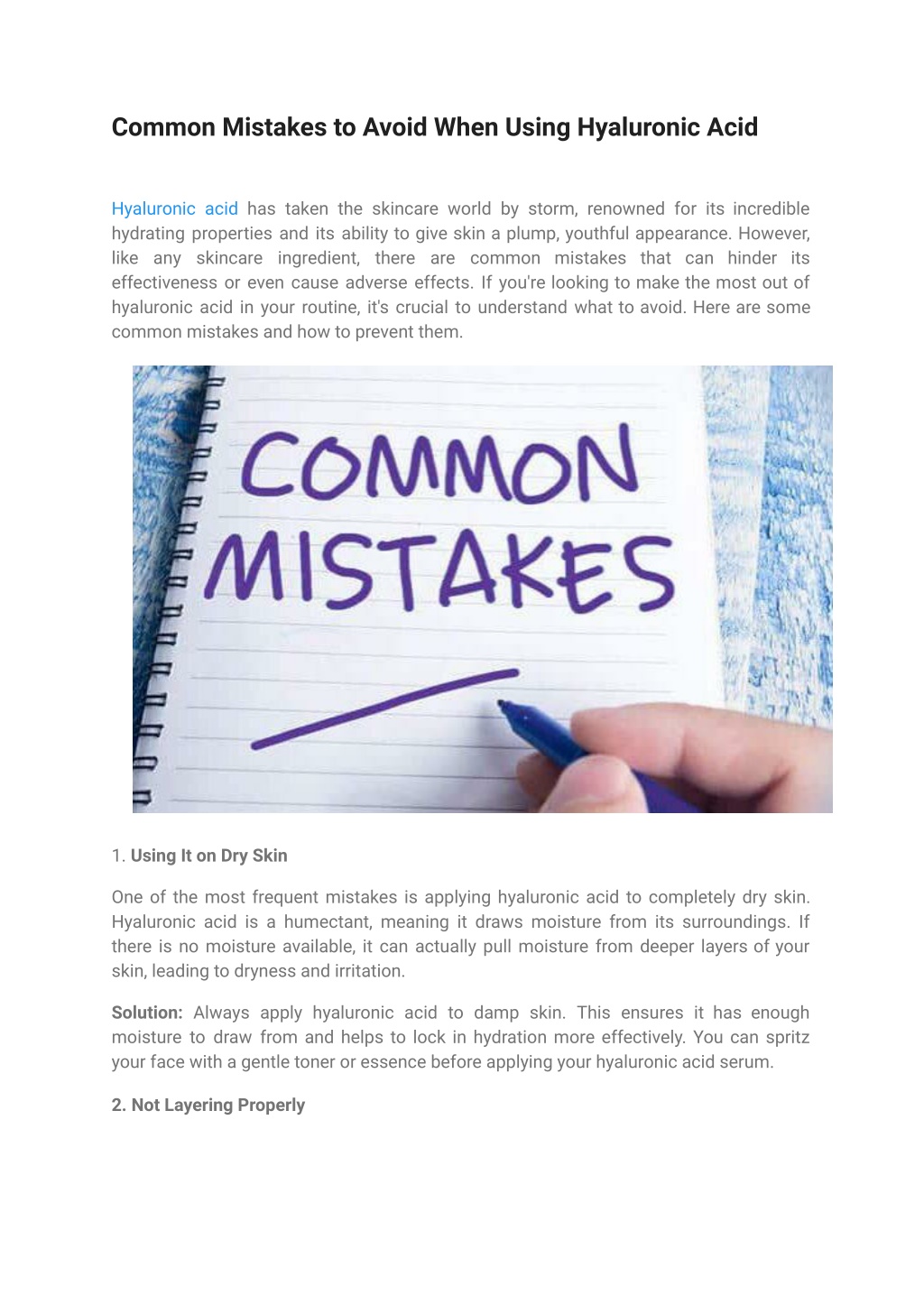
Common Mistakes to Avoid When Using Hyaluronic Acid
Hyaluronic acid has taken the skincare world by storm, renowned for its incredible hydrating properties and its ability to give skin a plump, youthful appearance. However, like any skincare ingredient, there are common mistakes that can hinder its ef
Download Presentation

Please find below an Image/Link to download the presentation.
The content on the website is provided AS IS for your information and personal use only. It may not be sold, licensed, or shared on other websites without obtaining consent from the author. Download presentation by click this link. If you encounter any issues during the download, it is possible that the publisher has removed the file from their server.
E N D
Presentation Transcript
Common Mistakes to Avoid When Using Hyaluronic Acid Hyaluronic acid has taken the skincare world by storm, renowned for its incredible hydrating properties and its ability to give skin a plump, youthful appearance. However, like any skincare ingredient, there are common mistakes that can hinder its effectiveness or even cause adverse effects. If you're looking to make the most out of hyaluronic acid in your routine, it's crucial to understand what to avoid. Here are some common mistakes and how to prevent them. 1. Using It on Dry Skin One of the most frequent mistakes is applying hyaluronic acid to completely dry skin. Hyaluronic acid is a humectant, meaning it draws moisture from its surroundings. If there is no moisture available, it can actually pull moisture from deeper layers of your skin, leading to dryness and irritation. Solution: Always apply hyaluronic acid to damp skin. This ensures it has enough moisture to draw from and helps to lock in hydration more effectively. You can spritz your face with a gentle toner or essence before applying your hyaluronic acid serum. 2. Not Layering Properly
Hyaluronic acid should be used as part of a layered skincare routine to maximize its benefitsof a well-thought-out layering process in your skincare routine. When not layered correctly, its benefits can be minimized or counteracted by other products. Solution: Apply hyaluronic acid after cleansing and toning but before heavier products like moisturizers and oils. This order allows the hyaluronic acid to effectively penetrate the skin and draw moisture from the subsequent products you apply. 3. Using Too Much Product It can be tempting to think that using more product will yield better results, but this isn't the case with hyaluronic acid. Over-application can lead to a sticky or tacky feeling on the skin, and it can even cause irritation. Solution: A few drops of hyaluronic acid serum are typically sufficient for the entire face. Follow the instructions provided by the product, and remember that more isn't always better in skincare. 4. Ignoring the Rest of Your Skincare Routine Hyaluronic acid is a powerful hydrator, but it works best when used in conjunction with a comprehensive skincare routine. Neglecting other essential steps like cleansing, exfoliating, and moisturizing can limit its effectiveness. Solution: Ensure you have a balanced skincare regimen that includes a gentle cleanser, exfoliant, toner, and moisturizer. Hyaluronic acid should be an addition to this routine, not a replacement for other products. 5. Not Sealing It In Hyaluronic acid needs to be sealed in with a good moisturizer to prevent it from evaporating and leaving your skin even drier than before. Solution: After applying hyaluronic acid, always follow up with a moisturizer to lock in the hydration. Look for a moisturizer that contains occlusive ingredients, which help to form a barrier on the skin and retain moisture. 6. Choosing the Wrong Hyaluronic Acid Product
Not all hyaluronic acid products are created equal. Some may contain additional ingredients that could irritate your skin, especially if you have sensitive skin. Solution: Opt for products that are specifically formulated for your skin type. Look for hyaluronic acid serums that are free from fragrances, alcohol, and other potential irritants. Reading reviews and consulting with a dermatologist can also help you make an informed choice. 7. Not Considering Molecular Weight Hyaluronic acid comes in different molecular weights, which affects how deeply it penetrates the skin. High molecular weight hyaluronic acid sits on the surface of the skin and provides surface hydration, while low molecular weight can penetrate deeper for more intensive hydration.
Solution: For best results, use a product that contains a combination of both high and low molecular weight hyaluronic acid. This ensures comprehensive hydration both on the skin's surface and deeper layers. 8. Ignoring Sun Protection Hyaluronic acid can make your skin more susceptible to sun damage. Failing to use adequate sun protection can lead to premature aging and other skin concerns. Solution: Always follow up your morning skincare routine with a broad-spectrum sunscreen of at least SPF 30. This will protect your skin from harmful UV rays and help maintain the benefits of your skincare products. 9. Mixing with Incompatible Ingredients Some skincare ingredients can counteract or reduce the effectiveness of hyaluronic acid when used together. For instance, using it with very acidic products can destabilize it. Solution: Be mindful of the ingredients you are combining in your skincare routine. Avoid layering hyaluronic acid with highly acidic products like pure vitamin C or strong exfoliating acids unless they are specifically formulated to be used together. 10. Inconsistent Use Consistency is key in any skincare routine. Irregular use of hyaluronic acid won't give your skin the continuous hydration it needs to see long-term benefits. Solution: Make hyaluronic acid a regular part of your daily skincare routine. Consistent use will ensure your skin remains hydrated and can help improve its overall appearance over time. 11. Ignoring Expiration Dates
Using expired hyaluronic acid can lead to reduced effectiveness and potential skin irritation. Over time, the product can degrade and become less effective. Solution: Pay attention to the expiration date on your skincare products. Store them in a cool, dry place to extend their shelf life, and replace them as needed to ensure you're getting the maximum benefits. Conclusion Hyaluronic acid can be a game-changer in your skincare routine when used correctly. Avoiding these common mistakes will help you harness its full potential, leading to plumper, more hydrated skin. Remember, the key to effective skincare is understanding how to use each ingredient to its best advantage. For more skincare tips and high-quality products, visit Accufix Cosmetics. By steering clear of these pitfalls and integrating hyaluronic acid thoughtfully into your routine, you can enjoy all the hydrating benefits it has to offer without the drawbacks. Happy hydrating! This comprehensive guide on the common mistakes to avoid when using hyaluronic acid should provide valuable insights for your audience and seamlessly integrate into your website content strategy. For more expert skincare advice and top-tier products, visit Accufix Cosmetics.














